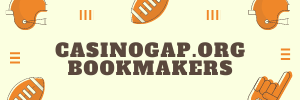Harry Kewell - Hero or villain?
22 Sep 2018 09:30 am, by YorkshireSquare
Today marks Harry Kewell’s 40th birthday. Having seen him make his debut for Leeds United that makes me feel old! The Australian will have been a hero to many Leeds fans, and it has been announced he is to be inducted into the Sport Australia Hall of Fame, he was a key part of the team at the turn of the century who went on those European adventures. But for his actions later in his career some Leeds fans will never forgive him.
A product of the Australian Institute of Sport from August 1994 to December 1995 at the tender age of fifteen, Kewell was offered the opportunity to travel to England and trial with Leeds United. Kewell was successful during the four week trial and was offered a contract by Leeds, possible due to his father's English heritage which would help overcome the strict visa requirements.
Playing mostly in a left midfield role and in attack, Kewell became one of Leeds young stars in a troop of highly promising youngsters, including Paul Robinson, Jonathan Woodgate, Stephen McPhail, Alan Maybury and Matthew Jones, who formed the nucleus of the Leeds FA Youth Cup winning team of 1996-97.
He made his senior debut against Middlesbrough, the week after United’s Coca-Cola Cup Final defeat at Wembley, when he appeared on the left hand side of midfield. He made a fine debut and played eighty minutes before being replaced by Rod Wallace. He became a fixture in the Leeds team under George Graham, on the left side of midfield, occasionally slotting in as a winger and playing alongside Rod Wallace up front.
For most of the 1997-98 season, Harry tended to play up front in a two/ three with Wallace and Hasselbaink and proved more than a handful for the opposition defences. He looked a little jaded at the start of the 1998-99 season, but his performances from December onwards were considerably improved, and he started to take more of a central attacking role, popping up with some useful goals and coming third in the PFA Young Footballer of the Year poll. He became recognised as one of the best players in the Premier League.
In 2001-02, he had a good start to the season, but again proved susceptible to injury. He scored a couple of great goals at Blackburn, but had a lengthy lay-off over the New Year. He took some time to get back to full fitness, and even then felt he had cause for complaint when he went public saying that he'd been fit for a couple of weeks but that David O'Leary refused to play him. Kewell made it known that he felt he was more of a forward than a winger, and with the arrival of El Tel at Leeds, he was given the chance to indulge his ambitions in that area.
After a fairly average start in that position, he finally regained some of the edge and confidence he had been remembered for, from when he first joined the club, and scored a couple of great individual goals as well as making a few for others. He eventually formed a striking partnership with fellow Australian Mark Viduka. The high point of this period was when they helped Leeds to the semi-final of the UEFA Champions League in 2000-01.
However, the club began to suffer financial difficulties and, by 2002-03, having sold many of their best players, Kewell and Viduka's efforts in front of goal merely prevented Leeds' slide from being relegated from the Premiership. His contract was due to expire at the end of the 2003/04 season and although his agent indicated he'd like to sign an extension, the terms that the agent insisted on for the extension were never going to be agreed by the Leeds board. After much acrimonious press coverage, a cut-price deal took him to Anfield with his agent pocketing a fortune and Leeds receiving barely £3 million for one of the biggest talents in the game.
Kewell moved to Liverpool for the start of the 2003-04 season, reportedly snubbing an offer from Manchester United. Kewell had been offered higher wages and Champions league football from some of Europe's biggest clubs including Arsenal, Chelsea and Manchester United as well as AC Milan, FC Barcelona and Real Madrid but eventually chose Liverpool, the club he followed as a boy. Kewell went on record saying he wanted to be viewed as one of the greatest players in the world, but opted for a safe and comfortable role at a club that is clearly not at the top tier of European football, and questions remain over his application and ambition.
After mixed performances at Liverpool his future at Liverpool was uncertain due to injuries. During the January transfer window, he was linked with a move to Fulham. In May 2008 it was revealed Kewell had turned down a new contract at Liverpool. While at Anfield Kewell's record was twelve League goals in ninety-three appearances, of which twelve were from the bench, he made ten F.A. Cup appearances, of which three were off the bench, without scoring. In the League Cup he netted once in five games, with three being from the bench, and in Europe and other games he scored three goals in thirty appearances, of which twelve were from the bench.
On 5th July 2008, Turkish champions Galatasaray signed Kewell to a two-year deal. This was an extremely controversial move as far as Leeds United fans were concerned after the tragic deaths of Kevin Speight and Christopher Loftus. Stabbed by Galatasaray fans in clashes before their UEFA Cup Semi-Final against Galatasaray in Istanbul in April 2000. To Leeds fans it was a betrayal, especially as Kewell has been a member of the team which played in that game. Kewell responded and in an open letter he stated;
I chose the No 19 shirt when I signed for Galatasaray as a sign of respect for Leeds because that was the number I got when I first became a regular member of the Leeds United FC starting XI. I felt that it might be a way to demonstrate that I had not forgotten where it all started and I was hoping that in a small way it would help the healing process of the tragedy that occurred on the 5th April 2000. To blame the Galatasaray AS club for the tragedy in Istanbul is simply wrong and discriminatory.
He remained at Galatasaray until the end of the 2010-11 season and opted to return to his home country, joining Melbourne Victory on a three-year contract in the A-League as their marquee player on 20th August 2011. He had played three seasons with the Turkish club, scoring twenty-two goals in sixty-one League games, of which twelve were from the bench.
Although he signed a three year contract with Melbourne Victory his mother-in-law contracted cancer and he and his family moved back to England and his A-League record was eight goals in twenty-five games at the end of the 2012 season. He signed for Qatari side Al-Gharafa in April 2013, but only as a short-term replacement for injured countryman Mark Bresciano.
He returned to Melbourne in June that year, but for A-League outfit Melbourne City this time, where he scored two goals in sixteen appearances before hanging his boots up at the end of the 2013-14 campaign. In July 2015, Kewell returned to England to begin a coaching career.
Back in 2004 Kewell was voted at number twenty in our list of greatest Leeds United players but that was before his betrayal by signing for Galatasaray. It will be interesting to see how history regards Harry Kewell as far as Leeds fans are concerned. For me those events in Istanbul of 18 years ago are still too raw to forgive Kewell. He could have been regarded as one of Leeds United’s greats, but instead his greed taints the memory of his time at the club.


















